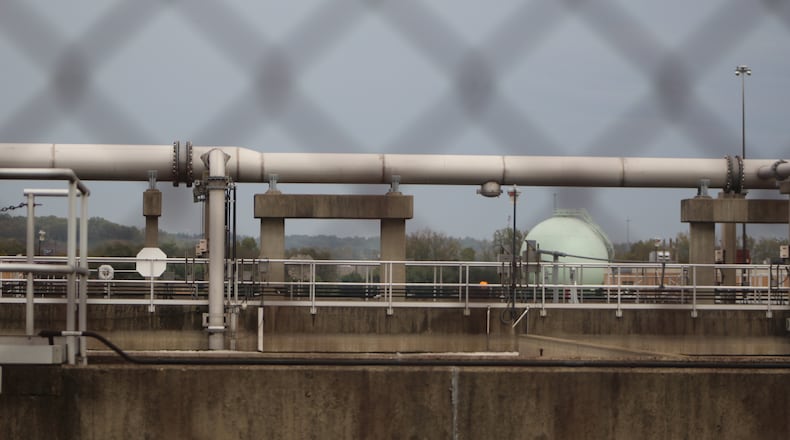“Phosphorus and other nutrients contribute to poor water quality issues, including harmful algal bloom,” said Dina Pierce, a spokesperson with the Ohio EPA.
Late last month, the Dayton city commission approved a resolution authorizing the city manager to enter into a loan agreement to fund new phosphorus treatment facilities.
The city is requesting a loan from the Ohio EPA’s Water Pollution Control Loan Fund, according to city documents. The construction project is expected to cost between $7.5 million to $7.8 million.
The project includes new chemical feed equipment and storage, new “thickening” equipment for sludge generated from the process and other upgrades.
Nutrient build-up is a form of pollution that harms waterways and water quality, environmental experts say.
Phosphorus is a nutrient that promotes algae growth in the receiving waterways, city officials said, and the Ohio EPA has issued phosphorus limits to larger dischargers to try to limit this growth.
Dayton’s discharge permit for its wastewater treatment plant was renewed in 2016, and it required the city to reduce phosphorus levels in the wastewater effluent, said Pierce, with the Ohio EPA.
The new limit requires the city to meet an annual average that is equivalent to 1 milligram per liter during the four driest months of the year (July to October) when the city and county wastewater treatment plants are the largest sources of phosphorus in the Great Miami River, Pierce said.
The main source of phosphorus in municipal wastewater is human waste, and a 2010 Ohio EPA study found impairments to fish and other aquatic life in the Great Miami River just downstream of Montgomery County and Dayton, she said.
Complying with the new regulations will prevent the city from facing legal action by the Ohio EPA, said Michael Powell, Dayton’s water department director.
He said there is no sewer rate increase directly attributable to this project, but rate increases have occurred to address overall wastewater treatment needs.
The state granted the city a generous compliance schedule to complete the design and construction of the phosphorus treatment facilities and has assisted in the design review process, said Chris Clark, waste reclamation division manager.
The design is complete, and the city is going through the bidding and award process, he said.
A few years ago, the city and county performed a nutrient study of the Great Miami River to try to determine the sources of phosphorus levels, Clark said.
He said the findings suggested the largest contributor was “non-point" sources, which can include agricultural runoff and pollutants from a wide range of urban and residential activities.
However, the city ultimately agreed to upgrade its facilities to try to remove phosphorus from its wastewater discharge. City officials say they believe the city will meet the 2022 compliance deadline.
About the Author


